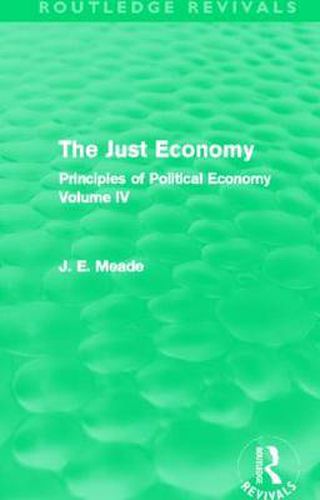Readings Newsletter
Become a Readings Member to make your shopping experience even easier.
Sign in or sign up for free!
You’re not far away from qualifying for FREE standard shipping within Australia
You’ve qualified for FREE standard shipping within Australia
The cart is loading…






First published in 1979, this fourth part of Principles of Political Economy applies the tools of economic analysis to the distribution of income and property. Professor Meade considers the problems of making interpersonal comparisons of welfare and of distinguishing between the efficiency and distributional aspects of changes in social welfare. He analyses the possible criteria for redistribution as between rich and poor members of the same generation, as between present and future generations, and - in the context of demographic policies - as between the born and the unborn. Special attention is given to the social factors (such as assortative mating, differential fertility, and laws and customs relating to the inheritance of property) in explaining the persistence of economic inequalities, and to the various forms of economic policy which may be devised for the reduction of such inequalities. An extensive mathematical model of the dynamics of social welfare in a second-best economy is appended.
$9.00 standard shipping within Australia
FREE standard shipping within Australia for orders over $100.00
Express & International shipping calculated at checkout
First published in 1979, this fourth part of Principles of Political Economy applies the tools of economic analysis to the distribution of income and property. Professor Meade considers the problems of making interpersonal comparisons of welfare and of distinguishing between the efficiency and distributional aspects of changes in social welfare. He analyses the possible criteria for redistribution as between rich and poor members of the same generation, as between present and future generations, and - in the context of demographic policies - as between the born and the unborn. Special attention is given to the social factors (such as assortative mating, differential fertility, and laws and customs relating to the inheritance of property) in explaining the persistence of economic inequalities, and to the various forms of economic policy which may be devised for the reduction of such inequalities. An extensive mathematical model of the dynamics of social welfare in a second-best economy is appended.